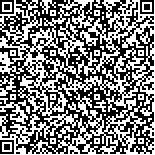| 引用本文: | 王慧欣,王慧媛,张梦,谭娇,王雅萍,梁剑铭,赵永星,黄永焯.泊洛沙姆188-PLGA纳米给药系统对抗耐药肿瘤的研究[J].中国现代应用药学,2014,31(10):1167-1170. |
| WANG Huixin,WANG Huiyuan,ZHANG Meng,TAN Jiao,WANG Yaping,LIANG Jianming,ZHAO Yongxing,HUANG Yongzhuo.Poloxamer188-PLGA Nanodrug Delivery System for Overcoming Drug Resistant Tumor[J].Chin J Mod Appl Pharm(中国现代应用药学),2014,31(10):1167-1170. |
|
| 本文已被:浏览 3468次 下载 2189次 |

码上扫一扫! |
|
|
| 泊洛沙姆188-PLGA纳米给药系统对抗耐药肿瘤的研究 |
|
王慧欣1,2,3, 王慧媛2, 张梦2, 谭娇2, 王雅萍2, 梁剑铭2, 赵永星1, 黄永焯2
|
|
1.郑州大学药学院,郑州 450001;2.中科院上海药物研究所,上海 201203;3.新乡医学院第一附属医院,河南 新乡 453100
|
|
| 摘要: |
| 目的 利用泊洛沙姆188对PLGA进行化学修饰,制备包载阿霉素的纳米粒,并评价纳米粒在人耐药乳腺癌细胞中的摄取能力及毒性。方法 通过EDC/NHS法合成泊洛沙姆188-PLGA,通过核磁共振对其结构进行表征并测定临界胶束浓度;通过纳米沉淀法制备包载阿霉素的纳米粒,通过粒度仪对纳米粒的粒径及分布进行分析,通过细胞摄取实验及细胞毒性实验对纳米粒的摄取效果及毒性进行评价。结果 成功合成了泊洛沙姆188-PLGA,并制备了粒径在140 nm左右的纳米粒,该纳米粒在人耐药乳腺癌细胞中有较好的摄取效果及较强的毒性。结论 泊洛沙姆188能够逆转耐药,增强耐药细胞对化疗药物的敏感程度。 |
| 关键词: 耐药 PLGA纳米粒 泊洛沙姆 阿霉素 MCF-7/ADR |
| DOI: |
| 分类号: |
| 基金项目:国家自然科学基金(81172996,81373357);中国博士后自然科学基金(2012M510121,2013T60478) |
|
| Poloxamer188-PLGA Nanodrug Delivery System for Overcoming Drug Resistant Tumor |
|
WANG Huixin1,2,3, WANG Huiyuan2, ZHANG Meng2, TAN Jiao2, WANG Yaping2, LIANG Jianming2, ZHAO Yongxing1, HUANG Yongzhuo2
|
|
1.School of Pharmaceutical Sciences, Zhengzhou University, Zhengzhou 450001, China;2.Shanghai Institute of Materia Medica, Chinese Academy of Sciences, Shanghai 201203, China;3.The First Affiliated Hospital of Xinxiang Medical University, Xinxiang 453100, China
|
| Abstract: |
| OBJECTIVE To improve the treatment efficacy of doxorubicin to human breast cancer drug-resistant MCF-7/ADR cells, the synthesis of Poloxamer 188-PLGA conjugates and preparation of doxorubicin-loaded Poloxamer188 modified PLGA nanoparticles were investiagated. METHODS Poloxamer 188-PLGA was synthesized by using EDC/NHS, and the product was confirmed by nuclear magnetic resonance(NMR) and its critical micelle concentration was measured. Doxorubicin-loaded nanoparticles were prepared by the nanoprecipitation method, and the particle size was analyzed by laser scattering particle counter. Cellular uptake was observed using a fluorescence microscope and cell viability was determined by MTT assay. RESULTS Poloxamer 188-PLGA was synthesized successfully, and the average size of doxorubicin-loaded nanoparticles was about 140 nm. The nanoparticles could improve the intracellular delivery of doxorubicin and thus enhance the cytotoxicity in MCF-7/ADR cells. CONCLUSION Poloxamer 188 modified PLGA nanoparticles can reverse drug resistance and increase the cytotoxicity of doxorubicin in MCF-7/ADR cells. |
| Key words: drug resistance PLGA nanoparticles Poloxamer doxorubicin MCF-7/ADR |
